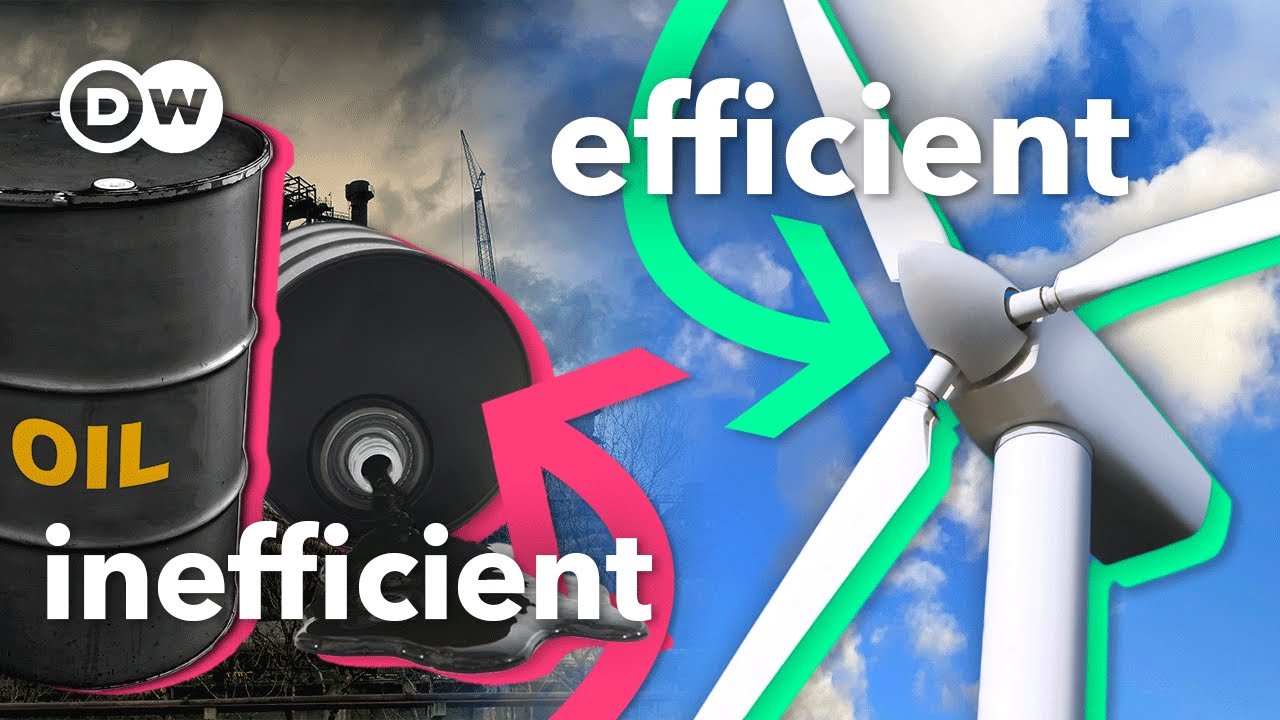Summary: This video talks about a misconception about switching away from fossil fuels to cleaner energy sources. The video argues that we don’t need to replace all fossil fuels, but rather focus on inefficiency in the energy system.
The video introduces a flow chart called Sankey diagram which depicts how energy flows through a system. It divides energy into four stages: primary, secondary, final and useful energy. Primary energy is the original source like coal or wind. Secondary energy is a transformed version for easier transportation, like electricity. Final energy is delivered to users and useful energy is the energy that is actually used.
The inefficiency exists throughout the energy flow. Most wasted energy happens when we convert primary energy to secondary energy, and from final energy to useful energy. For example, when we burn fossil fuels to generate electricity in a power plant, a majority of the heat is lost to the environment. Similarly, a gas stove wastes most of the energy from burning the gas as ambient heat in your kitchen.
The video argues that if we focus on improving efficiency, we would need much less renewable energy to replace fossil fuels. For example, switching to electric vehicles and induction stoves would significantly reduce energy waste.
Overall, the video suggests that switching away from fossil fuels is not as difficult as it seems, because improving energy efficiency can significantly reduce our reliance on fossil fuels.
Some people are still using current primary energy supply share of renewables to bash wind and solar. Given the rapid adoption of these techs, such unfair metric will become more and more irrelevant. Once thermal electricity generation becomes the exception, electricity becomes the main primary energy carrier. Some forms of secondary energy carriers will still exist (in form of green chemical molecules) but overall efficiency of the energy system will no doubt improve.
The main reason why I downvoted this video is due to a different perspective. To my understanding, it tries to present a “field” of solutions that have been overlooked so far.
In a way, it assumes that we keep capitalism as it is. It assumes that all the polluters are honest about the numbers they make public on their pollution. It assumes that politicians are mainly looking to do public good and not that they are lobbied and funded by the big corporations. At least, that’s how it sounds to me.
It does not talk about the systemic changes needed. We run on a model that has eternal growth as a fundamental thing. This is not sustainable by definition. Solutions need to address that, unfortunately this video doesn’t.
In a way, it assumes that we keep capitalism as it is. It assumes that all the polluters are honest about the numbers they make public on their pollution. It assumes that politicians are mainly looking to do public good and not that they are lobbied and funded by the big corporations. At least, that’s how it sounds to me.
It does no such thing
It does not talk about the systemic changes needed. We run on a model that has eternal growth as a fundamental thing. This is not sustainable by definition. Solutions need to address that, unfortunately this video doesn’t.
You either didn’t watch the video or there’s a language barrier, because what? Are you confusing this with another video?
Well, this part is quite telling of its approach. And that’s just from the very beginning. It says more or less:
As it turns out we don’t need to replace all the fossil fuel we are burnig, just 1/3 of it.
Apart from that I didn’t spot any systemic change implied (maybe I missed it, please point it out to me). Better managing energy waste is not what I had in mind for systemic change.
We only need to replace a third of them, here’s why and then spends the whole video explaining.
It’s too early for this. Have a good day.
“Why stop killing our planet when we can draw the process out even longer?”
So this video is just shilling big oil
I hate that you’re posting so confidently in your ignorance.
The video says that the notion that we can’t replace fossil fuel with renewables given that we get 80% of our energy from fossil fuels is moot given that we waste two thirds of the energy we create. Thus if we move to renewables which are much more efficient, we only need to replace one third.
I genuinely don’t know how you managed to get to your conclusion.
Edit: Seriously, you could’ve read the last paragraph of the summary and not come away looking as misinformed as you have. You could even look at the thumbnail and not look as imbecilic. I genuinely don’t understand why someone would be so eager to say something that they just willingly look…
Edit2: Genuinely curious, in your head, why would someone post something shilling for fossil fuels in the Green Energy community?




